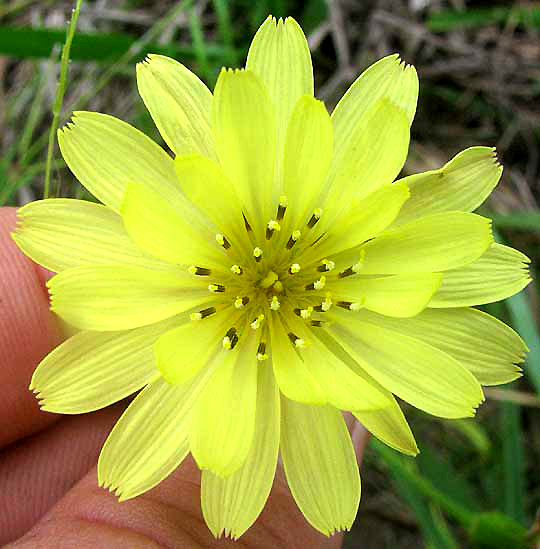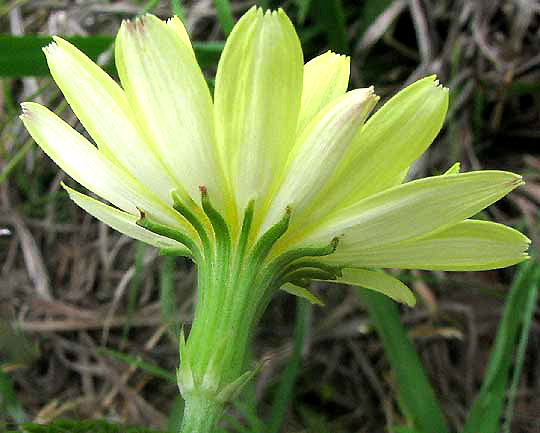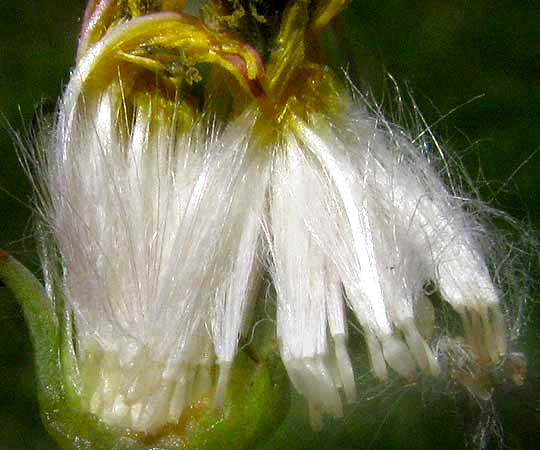Excerpts from Jim Conrad's
Naturalist Newsletter
from the June 16, 2013 Newsletter issued from the valley of the Dry Frio River in northern Uvalde County, southwestern Texas, on the southern border of the Edwards Plateau; elevation ~1750m (~5750 ft); N29.62°, W99.86°; USA
TEXAS DANDELION
Nowadays early each morning, in disturbed, grassy areas such as lawns and roadsides, it looks almost like dandelions are flowering, until you get up close. Then you see that these plants' flowering heads arise on stems that not only are branched but also bear leaves, and you know that dandelion flower stems aren't branched and don't bear leaves. This is something else, as you can see below:

In that picture the item below and to the left of the flower is an old head from which cypsela-type fruits already have been lost, and even that looks very much like a spent dandelion head. So, what is this almost-dandelion?

Above you see that our plant's flower head seen from above sure looks like a dandelion. The head bears no disk flowers in an "eye," and each ray flower is tipped with five little teeth, which are vestigial corolla lobes -- all just as with dandelions. If you look at the flower head from below you see that the green bracts, or phyllaries, are in two series, a row of short outer ones at the bottom and a row of much longer, inner ones above the shorter ones, also pretty much as with the Dandelion. You can see them below:

Breaking open a flower head you find that atop each cypsela-type fruit there's a white "parachute" consisting of many very slender, white hairs, shown below:

The white hairs make up the pappus. Notice that each cypsela's top narrows to a short neck. As the cypsela matures and grows, the neck will elongate and the white-haired pappus will become a white parachute carrying the fruit on the wind, just as with Dandelions.
Obviously, on the Evolutionary Tree of Life, this plant occupies a twig tip very near the dandelions. In fact, it's what often is called the Texas Dandelion, but outside of Texas maybe it's better known as the Smallflower Desert-chicory. It's PYRRHOPAPPUS PAUCIFLORUS, fairly closely related to the dandelion, but in a different genus. The Texas Dandelion occurs in arid northern Mexico and in the US south-central states from Arizona to Florida.
Each morning the Texas Dandelion's flower heads boldly show up yellow on green grass, but if it's sunny the heads close up after three or four hours and by noon it's hard to locate a single plant because not a trace of yellowness shows anywhere.
In a paper appearing in the Papers of the Peabody Museum of American Archaeology and Ethnology it's reported that the Navajo used Texas Dandelion's branched, leafy flower-stalks as a ceremonial emetic.